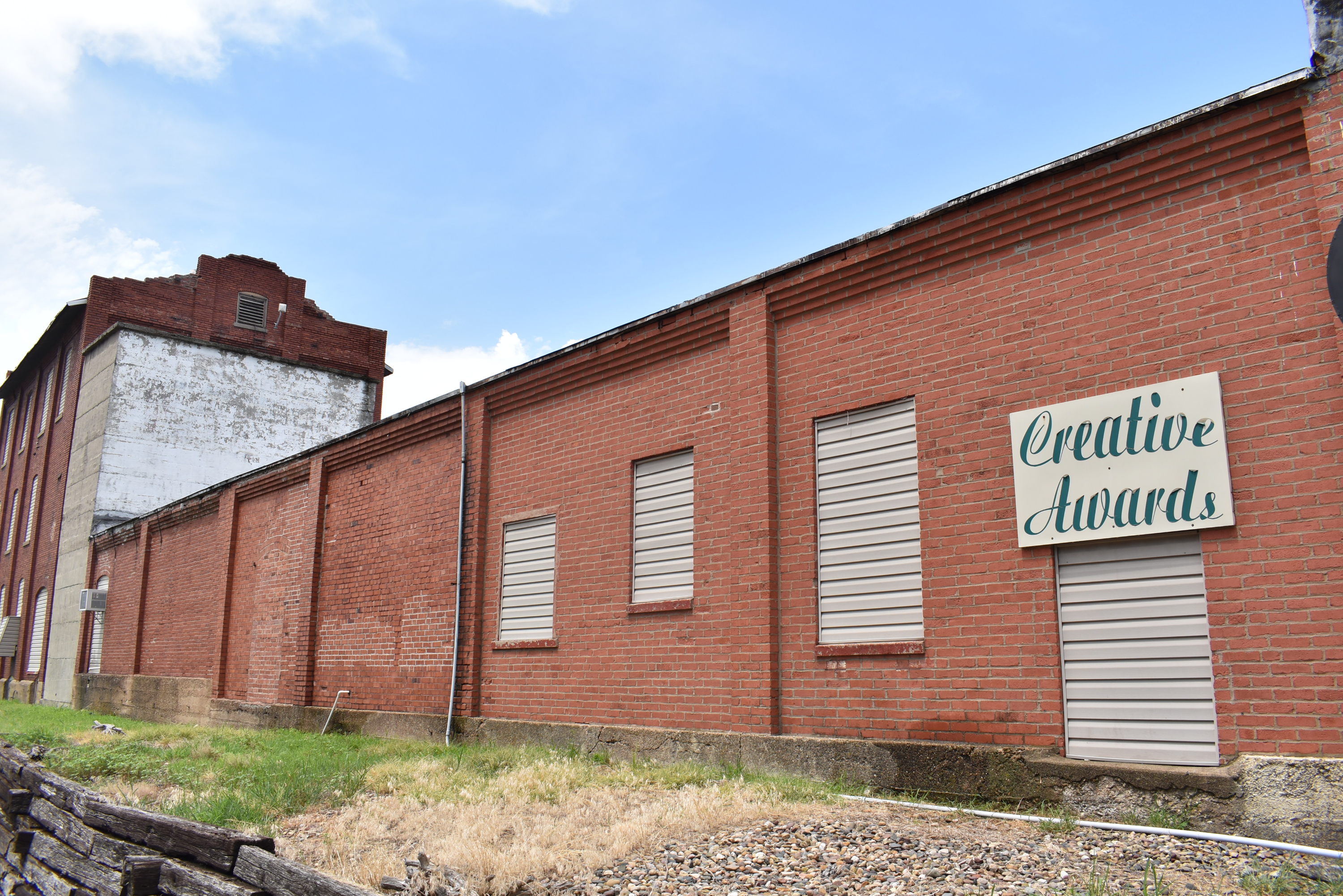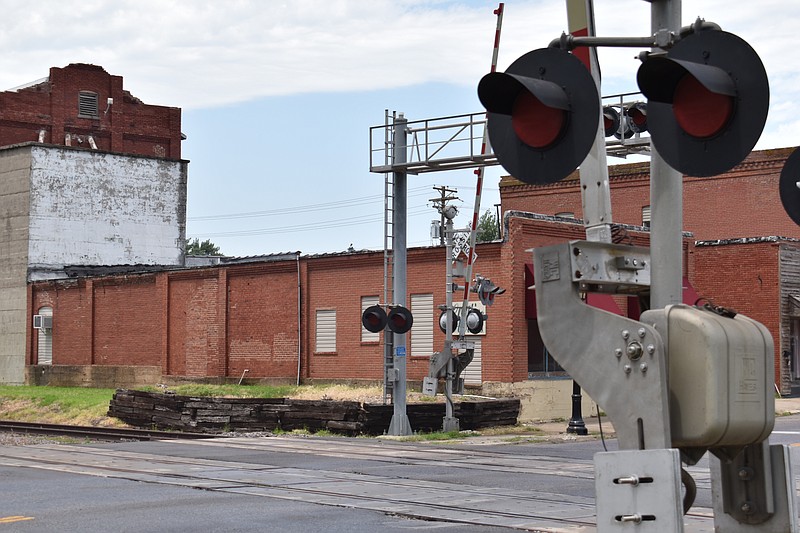A track-side mural honoring California's railroad history has received the green light.
After selecting a location, Gail Hughes' dream of honoring the community's railroad history can now come to life.
More than 45 years after California's Missouri Pacific Railroad depot was demolished, California Progress Inc. (CPI), the Moniteau County Historical Society and Hughes' family are proceeding with the installation at 405 S. Oak St. Jefferson City muralist Dennis Holliday will craft the artwork, which will be on the northern side of the tracks. Hughes -- a former "mover and shaker" in many community organizations who was heavily involved with California's murals -- worked with Holliday previously to conceptualize a transportation-themed mural.
The project was forced to change tracks in June after the Moniteau County Library's Board of Trustees turned down an offer to have the mural painted on their current facility at 501 S. Oak St. As the library plans to move into a new facility within the next decade, a 20-year stipulation in the mural contract -- which transfers between property owners -- made trustees uneasy about the possibility of the installation encumbering sale of the property. Thankfully, a backup plan of moving the mural south of the tracks was successful.
David Jungmeyer, head of the Moniteau County Historical Society mural committee, reported July 17 to the CPI Board of Directors that Kyle McDaniel, owner of 405 S. Oak St., signed a mural agreement with a release on accidental damages. McDaniel won't be held responsible for accidental damage caused in certain situations, such as a car crashing into the building or a train derailment.
After pipes, an air conditioning unit and other obstructions were removed from the wall, Holliday said he started treating the surface to prepare it for painting. He sprayed a vinegar-water mixture on the wall to kill mold, then pressure washed the surface to further clean it. He and his crew will apply two pale blue base coats to the wall, which will serve as the mural's background. Boards will also be installed in place of the siding covering windows to give the wall an even surface.
With the base coats in place, Holliday will begin painting the mural he helped conceptualize six years earlier with Hughes. Holliday previously told the Democrat that a transportation-themed mural was one of Hughes' first ambitions, although several of Holliday's other installations -- such as the ones at the historical society and Latham Family Memorial Park -- preceded it. CPI displayed the concepts, which Holliday will refer to while painting, at its June board meeting.
The time required to complete the mural is dependent on weather, Holliday said. Hot temperatures make it impossible to work with the paint, as it dries quicker and won't adhere properly to the masonry, leading to cracking and flaking. He recalled that temperatures were once so hot at another California project -- at Drinkard Construction Get It, LLC. -- that the paint dried on the brush before it could be applied to the wall. Recommended temperatures for working with the paint, he added, are between 60 and 85 degrees.
In addition to paint, the heat can affect the small team of artists crafting the mural. Holliday said he will do most of the work, although another person will assist him and helping paint the base coats. Creating the mural itself involves a lot of moving around and viewing progress from different perspectives, he said, as no sketches or projections are used. The mural may contain around 15 different layers, he added, each of which must dry before the next can be painted.
Local residents can also get involved in the project. Holliday said anyone can contact him at 573-645-2734 to inquire about helping. He added that he inquired with other artists on the project and hopes they can assist.
CPI is funding $5,000 toward the mural's creation, with Hughes' family paying the remainder of the approximately $17,000 mural. As with most of California's other murals, CPI is also responsible for maintenance of the installation.
Although it no longer stops here, the rail industry sparked the growth that shaped California, along with other towns like Clarksburg and Tipton. Jungmeyer, who followed in his father's footsteps and briefly worked for Missouri Pacific at the California depot, previously said California was considered the "Twin City" because a new district spawned closer to the tracks. Originally, businesses were mainly isolated to the northern part of town, in what is now known as the Old Town district.
Despite the California depot was demolished in fall 1977, the railroad's impact on the town is still felt. The railroad not only spurred the town's physical growth, Jungmeyer said, but also attracted industries such as Ralston-Purina (now Cargill) that heavily relied on it.
 Democrat photo/Garrett Fuller — The southern wall of 405 S. Oak St., is seen July 26 from the Oak Street rail crossing before a mural depicting California's railroad history is painted. The Creative Awards sign has since been removed and the siding covered by boards for an even painting surface. Jefferson City muralist Dennis Holliday treated the wall with a vinegar-water mixture to kill mold and pressure washed the wall before this photo was taken. He will begin applying two base coats this week, weather permitting.
Democrat photo/Garrett Fuller — The southern wall of 405 S. Oak St., is seen July 26 from the Oak Street rail crossing before a mural depicting California's railroad history is painted. The Creative Awards sign has since been removed and the siding covered by boards for an even painting surface. Jefferson City muralist Dennis Holliday treated the wall with a vinegar-water mixture to kill mold and pressure washed the wall before this photo was taken. He will begin applying two base coats this week, weather permitting.
